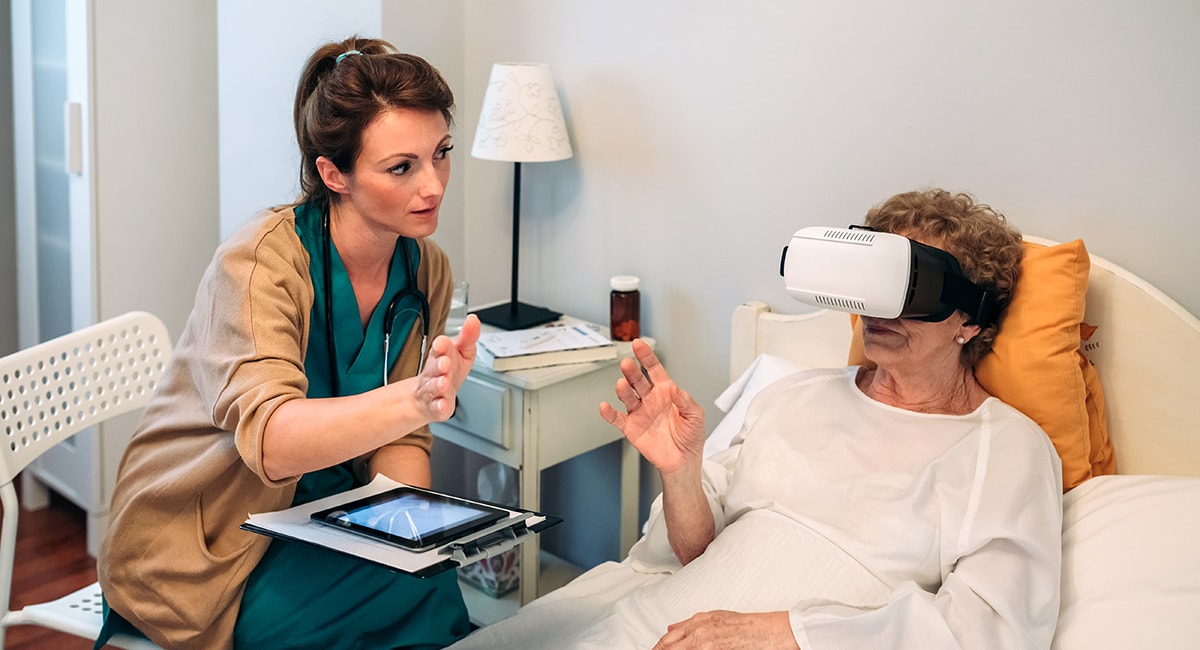January 13, 2020
How VR Health Solutions Reshape Patient Care
Virtual reality has the power to change a patient’s perspective, aiding pain management and anxiety.

But what if there were a way to alleviate the stress many people feel when visiting a doctor or hospital? Virtual reality technology may be the needed prescription — for anxiety and other health issues.
For many years, technologists and healthcare providers have made great strides in applying IT to patient care. The healthcare industry has successfully deployed solutions ranging from large-scale electronic record systems to personal, connected devices that monitor people’s vital signs. But until recently, the industry hadn’t gotten far in applying technology to improve the in-person patient experience. For most of us, sitting in an exam room waiting our turn with the doctor, for example, has been the same throughout our lives.
Increasingly, healthcare companies are using VR for multiple purposes, including to treat anxiety and even manage pain. And yes, we are talking here about the VR experience you’ve seen in consumer applications: a headset or glasses worn on the face with specialized content that makes you feel like you’re in an alternate, simulated environment. Many of today’s VR health applications have been approved by the Food and Drug Administration and comply with HIPAA. And their content is clinically developed and reviewed.
Real Results from a Virtual Experience
Whether experienced in a doctor’s office or the comfort of home, clinically validated VR experiences help manage acute and chronic pain. Companies such as AppliedVR have developed VR applications that can effectively replace opioid treatments in some patients by altering their brains’ perception of pain. XRHealth combined VR with the growing practice of telehealth to create a platform that delivers VR experiences to patients where they live while allowing two-way communication with healthcare providers.
In practice, VR works as a sensory tool that can distract patients from their current situations or even affect pain transmitters. Cedars-Sinai Medical Center in Los Angeles has delivered dozens of babies with the help of VR. Mothers don VR goggles during labor — in some cases instead of receiving an epidural — and enter a carefully created, relaxing world. Studies have suggested such a VR experience can reduce the worst pain by 20 percent or more and cut the time patients worry about their pain by more than 40 percent.
In cases of long-term care, VR benefits both patients and healthcare providers. For example, VR has been shown to help people with dementia, potentially reducing the need to medicate patients. At the same time, it’s been deployed to people who work with dementia patients in order to help them better understand and empathize with those in their care.
With VR, patients remain in control. If you’ve ever tried VR, you may know that some people get nauseated from the headset experience. If this side effect occurs, doctors recommend the patient simply remove the headset.
Ultimately, as with many technology applications — especially VR — content will be king. As the cost of VR comes down, more markets will deploy it in new, creative ways. In healthcare, its success depends on creating experiences that truly impact patients’ perceptions. Early results suggest that VR has the power to change a patient’s perspective.


